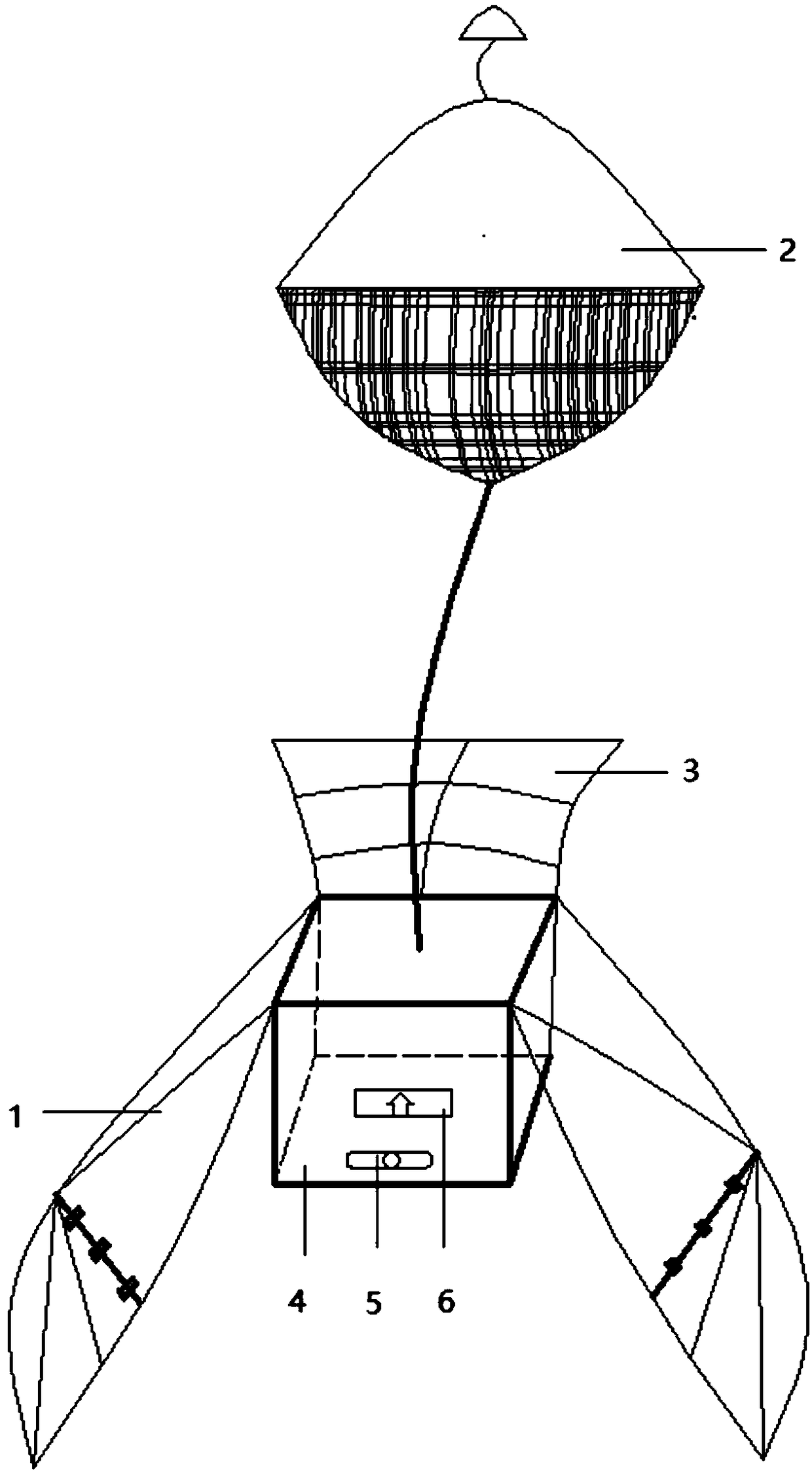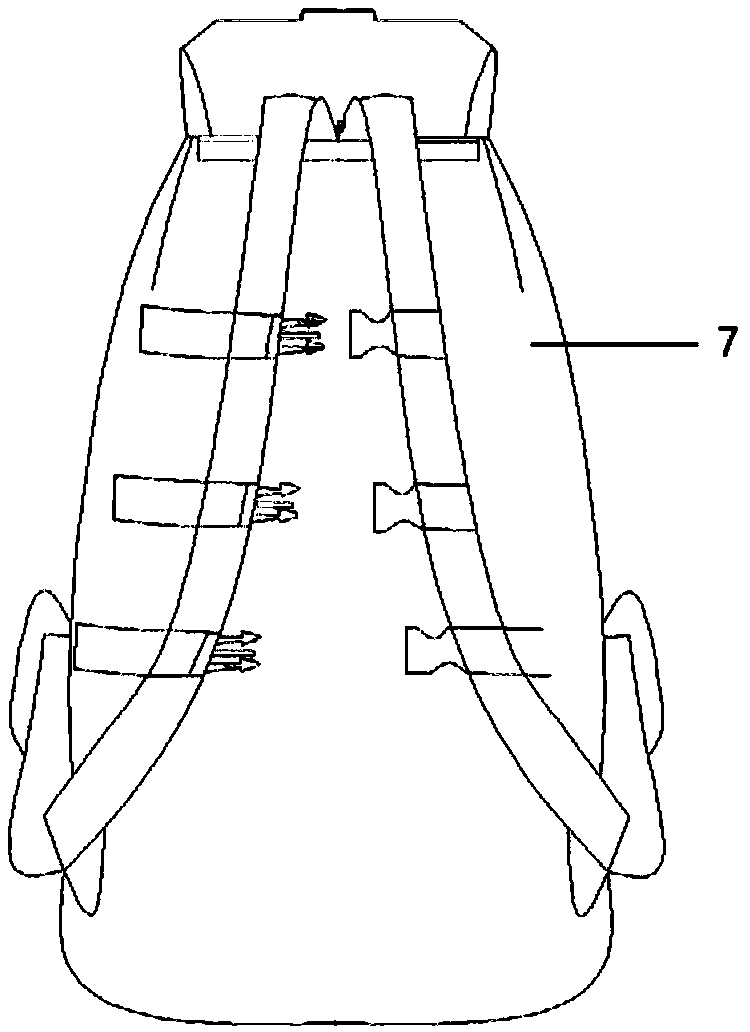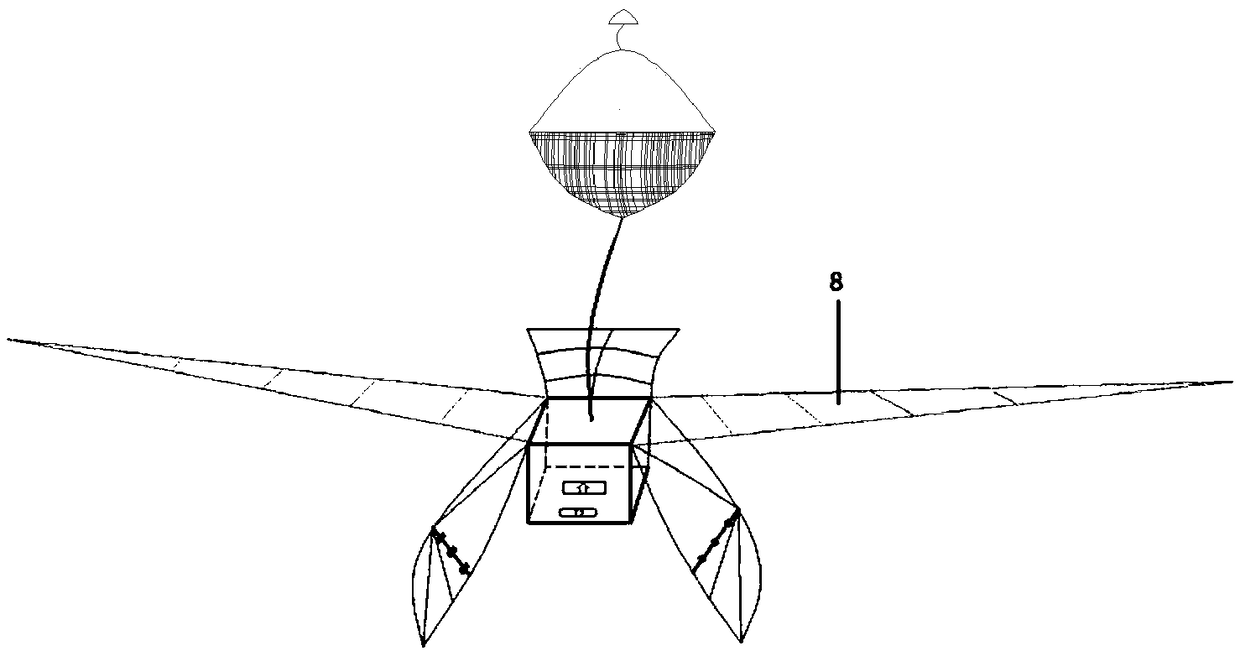Flapping wing landing backpack
A backpack and parachute technology, applied in the field of flapping wing landing backpacks, can solve the problems of the lack of difficult-to-operate, effective and safe parachutes, the lack of research and application of flapping wing safe landings, etc., so as to improve the safety factor and shorten the parachute opening time. Effect
- Summary
- Abstract
- Description
- Claims
- Application Information
AI Technical Summary
Problems solved by technology
Method used
Image
Examples
Embodiment 1
[0064] This example relates to a flapping wing landing backpack, wherein the manipulation is performed by manual control (manual control).
[0065] Manual control here refers to manual control of parachute 2 parachute opening and flapping wing 1 flapping frequency, adjusting the direction of gliding and landing through human body rotation or twisting, and manually closing the whole device after landing. Before use, a short period of study and practice is required.
[0066] The flapping wing landing backpack is designed to be used by a single person, and is suitable for low altitude or ultra-low altitude, and is used for landing and deceleration, so as to land safely (landing or falling into the water). It can be used in rescue, sports, and aviation, such as escape and rescue of high-rise buildings, oil wells, and mountains, outdoor sports, and low-altitude parachuting of aircraft. According to the purpose and the weight of the user, there is a corresponding version of the fla...
Embodiment 2
[0072] This example relates to a flapping wing landing backpack, wherein the manipulation is performed by means of automatic control. The main reason is to use automatic control instead of manual operation, which is easier and more intelligent to use, especially suitable for the first time users in emergency situations. In some scenarios, intelligent operation is safer.
[0073] Automatic control mode, the basic design structure of flapping wing landing knapsack is identical with embodiment 1, in embodiment 1, to schematic Figures 1 to 6 The description of is also applicable to embodiment 2. The difference lies in the control system. In the automatic control mode, a variety of sensors are installed in the frame 4, including manometers, accelerometers, gyroscopes, anemometers, GPS locators, etc., and control components (including control chips, relays, steering gears, etc.) etc.) form a new control system 6, which is transformed into a microcomputer intelligent system operat...
Embodiment 3
[0078] This example relates to a flapping wing landing backpack. On the basis of the above-mentioned embodiments 1 and 2, some parts are reinforced and upgraded to ensure that it can be used in "high-altitude" landing and expand its application range. Here "high altitude" refers to 500 meters and above.
[0079] The basic design structure of flapping wing landing knapsack in embodiment 3 is identical with embodiment 1, 2, in embodiment 1 and embodiment 2, to schematic Figures 1 to 6 The description of is also applicable to embodiment 3. In Embodiment 3, the use method of the flapping wing landing backpack is basically the same as that described in Embodiments 1 and 2. The difference is that in Embodiments 1 and 2, the application scenarios are mainly low-altitude and ultra-low-altitude, with short landing time and relatively small impact force, while high-altitude parachuting in Embodiment 3 has long landing time, large impact force, and The situation may be more complicate...
PUM
 Login to View More
Login to View More Abstract
Description
Claims
Application Information
 Login to View More
Login to View More - R&D
- Intellectual Property
- Life Sciences
- Materials
- Tech Scout
- Unparalleled Data Quality
- Higher Quality Content
- 60% Fewer Hallucinations
Browse by: Latest US Patents, China's latest patents, Technical Efficacy Thesaurus, Application Domain, Technology Topic, Popular Technical Reports.
© 2025 PatSnap. All rights reserved.Legal|Privacy policy|Modern Slavery Act Transparency Statement|Sitemap|About US| Contact US: help@patsnap.com



